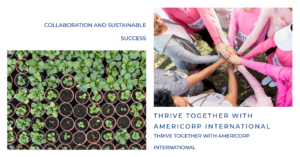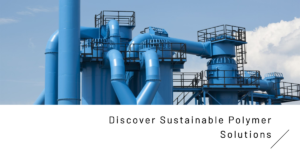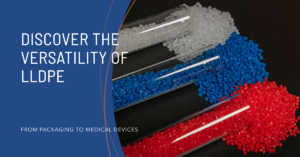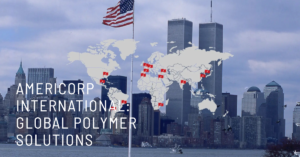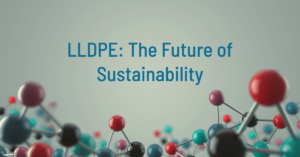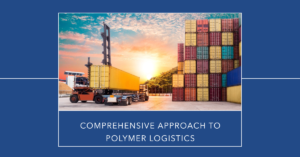Plastics play a pivotal role in our daily lives, finding applications in various industries and products. In this comprehensive guide, we will delve into the different types of plastics, their properties, how to choose the right plastic for specific projects, sustainable alternatives, and a detailed breakdown of specific plastic types. Let’s embark on a journey to understand the world of plastics.
Introduction
Plastics, known for their versatility and adaptability, have become integral to modern life. From packaging materials to medical devices, plastics serve diverse purposes. This guide aims to provide a thorough understanding of plastic types, properties, and the decision-making process in selecting the most suitable plastic for your projects.
General Plastic Types Comparison
| Plastic Type | Description | Key Characteristics |
|---|---|---|
| Thermoplastics | Become soft and malleable when heat is applied and become hard again once cooled | Hard, brittle, opaque, resistant to deformation under load, resistant to most acids, good electrical and heat resistance |
| Thermosetting Plastics | Strengthen during being heated but cannot be reheated and remolded once they are initially cooled | Chemical or solvent resistance, high heat stability |
| Commodity Plastics | Produced in high volumes for applications such as food containers and household products | Inexpensive to produce, relatively weak mechanical properties |
| Engineering Plastics | Have better mechanical and/or thermal properties than the more widely used standard plastics | Good mechanical characteristics, excellent machinability and dimensional stability, good chemical resistance, good wear resistance |
| Biodegradable Plastics | Made from renewable resources and can be broken down by microorganisms into natural substances | Used in applications such as packaging, agriculture, and medical implants |
Plastics can be broadly categorized into various types, each with its unique characteristics. Understanding these categories is crucial for making informed decisions when selecting materials for different applications.
- Thermoplastics vs. Thermosetting Plastics:
- Thermoplastics: These plastics can be melted and re-molded multiple times without undergoing chemical change. Common examples include polyethylene and polypropylene.
- Thermosetting Plastics: Once molded, these plastics undergo a chemical change and cannot be remolded. Bakelite and melamine are examples.
- Commodity Plastics vs. Engineering Plastics:
- Commodity Plastics: Widely used for everyday items, they are cost-effective and have a broad range of applications. Examples include polyethylene and polypropylene.
- Engineering Plastics: Known for their superior mechanical and thermal properties, they are used in specialized applications. Examples include polycarbonate and acrylonitrile-butadiene-styrene (ABS).
Commodity Plastics vs. Engineering Plastics Comparison Chart:
- Biodegradable Plastics:
- Plastics designed to break down over time, reducing environmental impact. Common types include PLA (polylactic acid) and PHA (polyhydroxyalkanoates).
Properties of Common Plastics
Here are the properties of common plastics: HDPE, LDPE, LLDPE, PP, PVC, PS, PET, and EVA.
HDPE: High-Density Polyethylene
HDPE is a widely used thermoplastic known for its robustness and versatility.
- Common Uses:
- Bottles, containers, pipes, and toys.
- HDPE vs. LDPE:
- HDPE has higher tensile strength and density than LDPE, making it suitable for sturdier applications.
- Safety Considerations:
- Generally considered safe for food and beverage packaging.
Choosing the Right Plastic for Your Project
Selecting the right plastic for a project involves a systematic approach, considering various factors.
- Project Requirements:
- Define the specific needs of your project, such as strength, flexibility, and chemical resistance.
- Plastic Properties:
- Match project requirements with the properties of different plastics.
- Example: Choose HDPE for outdoor applications due to its UV resistance.
- Common Mistakes to Avoid:
- Overlooking long-term considerations.
- Neglecting environmental impact.
Sustainable Plastic Alternatives
The environmental impact of plastics has led to a growing interest in sustainable alternatives.
- Biodegradable Plastics:
- Break down naturally, reducing long-term pollution.
- PLA, made from renewable resources, is a notable example.
- Plant-Based Plastics:
- Derived from renewable plant sources, contributing to a lower carbon footprint.
- Recycled Plastics:
- Utilizing recycled materials helps reduce the demand for new plastic production.
Guide to Plastic Recycling Symbols
Understanding plastic recycling symbols is essential for responsible disposal.
| Symbol | Meaning |
|---|---|
| ♳ | PET – Polyethylene Terephthalate |
| ♴ | HDPE – High-Density Polyethylene |
| ♵ | PVC – Polyvinyl Chloride |
| ♶ | LDPE – Low-Density Polyethylene |
| ♷ | PP – Polypropylene |
| ♸ | PS – Polystyrene |
| ♹ | Other |
Importance of Recycling:
- Reduces environmental impact.
- Conserves resources and energy.
In the next sections, we’ll delve into specific plastic types, their applications, and considerations.
Specific Plastic Types Breakdown
A. HDPE: High-Density Polyethylene
Common Uses:
HDPE, identified by recycling symbol ♴, is a versatile plastic widely employed in various applications.
- Bottles and Containers:
- HDPE’s durability makes it ideal for packaging products like detergents and household chemicals.
- Its resistance to chemicals ensures the integrity of the contents.
- Pipes and Ducts:
- Due to its high strength and resistance to corrosion, HDPE is extensively used in water and gas distribution pipes.
- Its flexibility allows for easy installation.
- Toys and Outdoor Furniture:
- HDPE’s UV resistance makes it suitable for outdoor applications.
- Commonly used in the manufacture of durable toys and furniture.
HDPE vs. LDPE:
HDPE and LDPE, both popular polyethylene variants, differ in their properties.
- HDPE:
- Higher tensile strength.
- Stiffer and more rigid.
- LDPE:
- Lower tensile strength.
- More flexible and less rigid.
Considering these differences is crucial when determining the most suitable plastic for a specific project.
Safety Considerations:
HDPE is generally considered safe for food and beverage packaging.
- FDA Approval:
- Approved by the U.S. Food and Drug Administration for contact with food.
B. LLDPE: Linear Low-Density Polyethylene
Benefits of LLDPE:
Linear Low-Density Polyethylene (LLDPE) possesses distinct advantages in certain applications.
- Film Production:
- LLDPE’s stretchability and puncture resistance make it suitable for film production, particularly in packaging.
- Flexible Packaging:
- Its flexibility allows for the creation of lightweight and durable packaging materials.
LLDPE vs. LDPE:
Understanding the differences between LLDPE and LDPE is crucial for selecting the right plastic.
- LLDPE:
- Higher tensile strength.
- More puncture-resistant.
- LDPE:
- Greater flexibility.
- Lower tensile strength.
LLDPE Recycling Challenges:
While LLDPE offers numerous benefits, recycling can present challenges due to its unique properties.
- Challenges:
- Limited recycling infrastructure for LLDPE.
- Mixed compositions in LLDPE products can complicate recycling processes.
The recycling industry is continually developing solutions to address these challenges.
C. LDPE: Low-Density Polyethylene
Properties of LDPE:
Low-Density Polyethylene (LDPE) is valued for its flexibility and transparency.
- Packaging Applications:
- LDPE is commonly used for packaging films, bags, and sheets.
- Its transparency allows for the visibility of packaged contents.
- Squeeze Bottles and Containers:
- LDPE’s flexibility makes it suitable for squeeze bottles, where ease of dispensing is essential.
LDPE vs. HDPE for Packaging:
Understanding the distinctions between LDPE and HDPE is crucial, especially in packaging.
- LDPE:
- More flexible, suitable for squeezable packaging.
- Lower tensile strength.
- HDPE:
- Stiffer and more rigid, ideal for sturdy containers.
- Higher tensile strength.
LDPE Food Safety Concerns:
Despite its widespread use in packaging, LDPE raises certain considerations regarding food safety.
- Concerns:
- LDPE may not be suitable for certain food storage applications due to its lower resistance to heat.
In the next section, we will explore Polypropylene (PP) and its various advantages.
D. PP: Polypropylene
Polypropylene Advantages:
Polypropylene (PP) stands out for its versatility and suitability for various applications.
- Packaging Industry:
- PP is extensively used in the packaging industry for containers, caps, and closures.
- Its high melting point ensures stability during hot filling processes.
- Textile Industry:
- PP is a popular choice in the textile industry for the production of fibers and fabrics.
- Its resistance to moisture and chemicals enhances its performance in textiles.
PP vs. HDPE for Containers:
When choosing materials for containers, understanding the differences between PP and HDPE is essential.
- PP:
- Higher melting point, suitable for hot filling.
- Greater chemical resistance.
- HDPE:
- Stiffer and more rigid.
- Widely used for packaging products with lower temperature requirements.
PP vs. PET for Textiles:
In the textile industry, the choice between PP and PET (Polyethylene Terephthalate) depends on specific requirements.
- PP:
- Resistant to moisture and chemicals.
- Commonly used in non-woven fabrics.
- PET:
- Known for clarity and strength.
- Widely used in the production of polyester fibers.
Polypropylene’s versatility makes it a preferred choice in industries where durability and chemical resistance are paramount.
E. PVC: Polyvinyl Chloride
Polyvinyl Chloride Applications:
Polyvinyl Chloride (PVC) is a widely used plastic with diverse applications.
- Construction Industry:
- PVC is extensively used in the construction industry for pipes, fittings, and profiles.
- Its durability and resistance to corrosion make it suitable for various building applications.
- Electrical Insulation:
- PVC’s electrical insulating properties make it a preferred material for cable insulation.
PVC vs. CPVC:
Understanding the distinction between PVC and Chlorinated Polyvinyl Chloride (CPVC) is crucial in specific applications.
- PVC:
- Suitable for cold water applications.
- Widely used in non-pressure applications.
- CPVC:
- Withstands higher temperatures.
- Ideal for hot water applications.
PVC Environmental Impact:
While PVC offers versatility, its environmental impact raises certain concerns.
- Challenges:
- Production of PVC involves the release of chlorine gas, contributing to environmental pollution.
- Recycling PVC can be challenging due to its complex composition.
In the subsequent section, we’ll explore Polystyrene (PS) and its diverse range of applications.
F. PS: Polystyrene
Polystyrene Uses:
Polystyrene (PS) is a widely used plastic known for its versatility and insulation properties.
- Packaging Industry:
- PS is commonly used in the packaging industry for disposable cups, food containers, and packaging materials.
- Its lightweight nature makes it ideal for disposable items.
- Insulation Material:
- Expanded Polystyrene (EPS) is used as insulation in the construction industry.
- Its low thermal conductivity enhances its insulation properties.
PS vs. PET for Food Packaging:
When it comes to food packaging, the choice between PS and PET depends on specific requirements.
- PS:
- Lightweight and suitable for disposable items.
- Commonly used for takeout containers and foam packaging.
- PET:
- Known for clarity and strength.
- Widely used for beverage bottles and food containers.
PS Health Risks:
While widely used, Polystyrene raises health concerns associated with its potential leaching of harmful chemicals.
- Concerns:
- Styrene, a component of PS, may leach into food and beverages, potentially posing health risks.
- Avoiding microwaving PS containers helps minimize the risk of leaching.
G. PET: Polyethylene Terephthalate
Polyethylene Terephthalate Benefits:
Polyethylene Terephthalate (PET) is a popular plastic known for its clarity, strength, and recyclability.
- Beverage Packaging:
- PET is commonly used for bottling beverages due to its transparency and lightweight nature.
- Its durability ensures the integrity of carbonated drinks.
- Textile Industry:
- PET is extensively used in the textile industry for the production of polyester fibers.
- Its strength and resistance to stretching make it ideal for textiles.
PET vs. HDPE for Bottles:
When choosing materials for bottles, understanding the differences between PET and HDPE is crucial.
- PET:
- Lightweight and transparent, ideal for beverage packaging.
- Commonly used for water and soda bottles.
- HDPE:
- Stiffer and more rigid, suitable for packaging products with lower temperature requirements.
- Commonly used for milk and detergent bottles.
PET Recycling Options:
PET’s recyclability contributes to its sustainability.
- Recycling Process:
- PET bottles can be recycled into a variety of products, including new bottles, textiles, and even carpets.
- The recycling symbol for PET is identified by the number ♳.
H. EVA: Ethylene Vinyl Acetate
Ethylene Vinyl Acetate Properties:
Ethylene Vinyl Acetate (EVA) is a copolymer known for its flexibility and durability.
- Footwear Industry:
- EVA is commonly used in the production of shoe soles due to its cushioning properties.
- Its lightweight nature enhances comfort.
- Sports Equipment:
- EVA is employed in the manufacturing of sports equipment, including padding for helmets and knee pads.
- Its shock-absorbing properties make it suitable for protective gear.
EVA vs. PVC for Shoe Soles:
Understanding the differences between EVA and PVC is crucial in the footwear industry.
- EVA:
- Lightweight and flexible, providing comfort in footwear.
- Commonly used in athletic and casual shoes.
- PVC:
- More rigid, suitable for certain industrial and heavy-duty applications.
Ethylene Vinyl Acetate’s versatility makes it a preferred material in industries where flexibility and shock absorption are critical.
Specific Plastic Application
Best Plastic for Outdoor Furniture
Choosing the right plastic for outdoor furniture is essential for durability and weather resistance.
- HDPE for Outdoor Furniture:
- HDPE’s UV resistance and durability make it an excellent choice for outdoor furniture.
- It withstands exposure to sunlight and harsh weather conditions.
- Recycled Plastic Options:
- Consider recycled plastics for sustainable outdoor furniture.
- Recycled HDPE or other eco-friendly materials provide an environmentally conscious choice.
Safest Plastic for Food Storage
Ensuring food safety is crucial when selecting plastics for food storage.
- HDPE and LDPE for Food Storage:
- HDPE and LDPE are generally considered safe for food storage.
- These plastics are widely used for containers and packaging due to their low risk of leaching harmful chemicals.
- Glass and Stainless Steel Alternatives:
- For those concerned about plastic safety, consider glass or stainless steel containers for food storage.
- These materials are inert and do not pose risks of chemical leaching.
Can You Recycle LLDPE Bags?
Recycling LLDPE bags poses certain challenges due to their unique properties.
- Limited Recycling Facilities:
- LLDPE recycling faces challenges due to the limited infrastructure for processing this specific type of plastic.
- Check with local recycling facilities to determine if they accept LLDPE bags.
- Reusable Bag Alternatives:
- Consider using reusable bags made from materials with better recycling options, such as HDPE or woven polypropylene.
- Reusable bags contribute to sustainability and reduce the demand for single-use plastics.
Compare HDPE and PP for Pipes
Choosing the right material for pipes depends on specific project requirements.
- HDPE Pipes:
- HDPE pipes are known for their flexibility, corrosion resistance, and long lifespan.
- They are suitable for various applications, including water and gas distribution.
- PP Pipes:
- PP pipes offer chemical resistance and durability.
- Consider PP pipes for industrial applications where resistance to chemicals is crucial.
Sustainable Alternatives to PVC Flooring
Selecting sustainable flooring options is vital for environmentally conscious consumers.
- Bamboo Flooring:
- Bamboo is a rapidly renewable resource and an eco-friendly alternative to PVC flooring.
- It offers durability and a unique aesthetic appeal.
- Cork Flooring:
- Cork is a sustainable and biodegradable material suitable for flooring.
- It is comfortable underfoot and provides natural insulation.
Non-Toxic Alternatives to Polystyrene Foam
Reducing exposure to potential toxins is a concern when considering alternatives to polystyrene foam.
- Biodegradable Foam Alternatives:
- Look for biodegradable foam alternatives made from materials such as cornstarch or sugarcane.
- These alternatives break down naturally, reducing environmental impact.
- Paper-Based Packaging:
- Consider paper-based packaging as a non-toxic alternative to polystyrene foam.
- Paper is recyclable and poses fewer environmental and health concerns.
Biodegradable Plastic Options for Packaging
Exploring biodegradable plastic options is essential for minimizing environmental impact.
- PLA (Polylactic Acid):
- PLA is derived from renewable resources, such as cornstarch.
- It is compostable under specific conditions, offering a sustainable option for packaging.
- PHB (Polyhydroxybutyrate):
- PHB is a biodegradable polyester with properties similar to conventional plastics.
- It breaks down naturally in various environments.
Empower Your Choices:
Whether you’re a manufacturer selecting materials, a consumer making sustainable choices, this guide equips you with the knowledge needed to navigate the intricate landscape of plastics.
Remember, the world of plastics is continually evolving, with innovations in sustainability and recycling paving the way for a more responsible future. Stay informed, make conscious choices, and contribute to a plastic landscape that aligns with your values.
Thank you for joining us on this journey through the vast realm of plastics. If you have further questions or need more insights, feel free to explore our related articles or reach out for personalized assistance.
